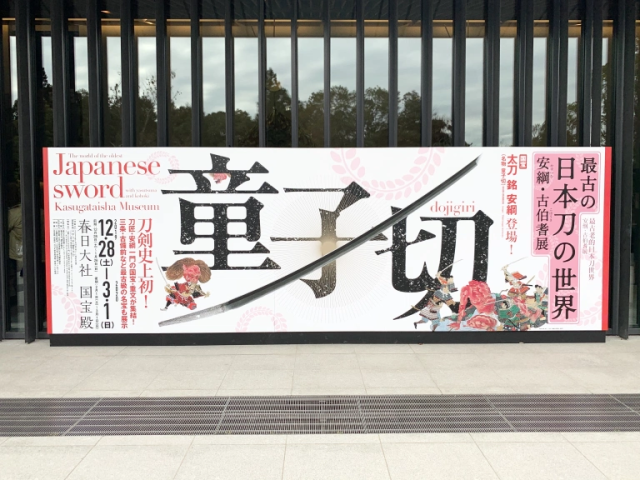
Legendary blade is a an official natural treasure, and presented in a uniquely beautiful way.
The Five Swords Under Heaven might sound like the reward you get for completing a late-game optional side quest in Final Fantasy, but it’s an actual designated set of the most beautiful and culturally prized swords to have ever been created in Japan. A while back, we saw one of the five, Mikazuki (“Crescent Moon”) at Tokyo’s National Museum, and this week we had the opportunity to gaze upon another: Dojigiri.
As you can guess, chances to see the Five Swords Under Heaven don’t happen every day. One is straight-up owned by the Japanese Imperial Family, and three, including Dojigiri, are officially designated national treasures of the country. So when we found out that Dojigiri was being displayed as part of an exhibition being held at Kasuga Shrine in Nara (which also recently displayed the famed Brother Katana set), we didn’t hesitate to hop on the Shinkansen and check it out.
▼ Dojigiri
Dojigiri is so old that it’s hard to say exactly how old it is, but some estimate its age at over 1,000 years. What we do know is that the sword was struck by famous swordsmith Yasutsuna, who lived in Hoki, a part of Japan in present-day Tottori Prefecture, during the Heian Period.
If you’ve got a bit of knowledge about Japanese swords, you’ve probably noticed that a lot of them have names with “giri” or “kiri” in them. Both come from the word kiru, literally “cut,” which can also be used to mean “kill” or “slay.” In the case of Dojigiri, it’s said that the sword was used by Minamoto no Yorimitsu, a samurai warlord, to slay Shuten-doji, an oni (demon) who, along with his minions, terrorized the capital city of Kyoto.
▼ Shuten-doji, after having been relieved of his head by Dojigiri
While seeing one of the Five Swords Under Heaven is always an unforgettable experience for history buffs, the way Kasuga Shrine’s museum is displaying Dojigiri is particularly special. Rather than place the blade in a display case along one of the walls, Dojigiri is housed in a standing case in the center of the room, enabling visitors to see it from a variety of angles.
▼ Including this perspective, ostensibly the one Shuten-doji saw the sword from as it came for his head.
As a matter of fact, if no one happens to be standing on the other side of the case from you, the reflection in the glass can allow you to view both surfaces of the blade at the same time.
▼ Even Dojigiri’s shadow looks awesome.
As we’ve talked about before, some of the most intriguing aesthetic aspects of a Japanese sword reveal themselves when you take a look at the flat of the blade. For starters, there’s the hamon, the tempering line, which can be as straight as the surface of a windless lake, or undulate like the waves of a roiling sea.
Dojigiri’s hamon is especially expressive, roaming over enough of the blade that different sections almost look like they’re from different swords.
But what’s arguably the most impressive thing about Dojigiri’s appearance is the amount of utsuri (“reflection”) it has. In katana parlance, utsuri refers to the amount of reflective shine in the flat of the blade between the hamon and unsharpened interior edge. A number of factors influence the amount of utsuri, including the quality of the metal used, and the amount of time the material is heated and quenched for. While Yasutsuna’s specific smithing technique has been lost to the ages, the result is a dazzling usturi far beyond what you’ll see in just about any other Japanese sword.
Dojigiri will be on display, and shining brightly, until March 1.
Event information
The World of the Oldest Japanese Swords / 最古の日本刀の世界
Venue: Kasugataisha Museum / 春日大社国宝殿
Address: Nara-ken, Nara-shi, Kasuganocho 160
奈良県奈良市春日野町160
Open 10 a.m.-5 p.m.
Admission 1,000 yen (US$9)
Exhibition until March 1
Website
Photos ©SoraNews24
● Want to hear about SoraNews24’s latest articles as soon as they’re published? Follow us on Facebook and Twitter!
[ Read in Japanese ]
Casey hasn’t quite achieved national treasure status, but you can follow him on Twitter anyway.

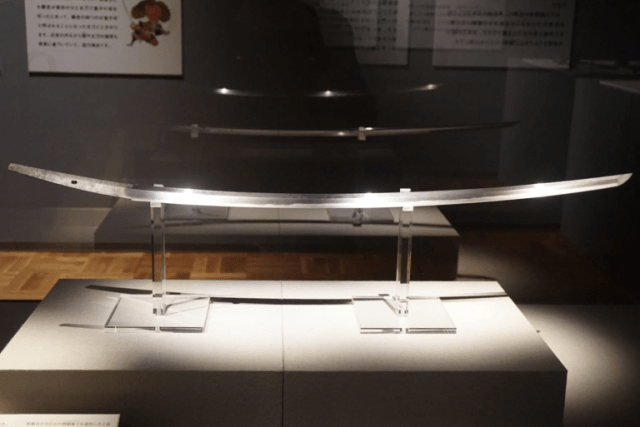
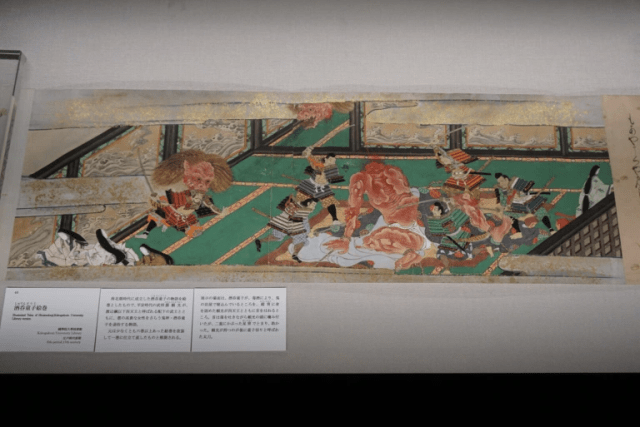
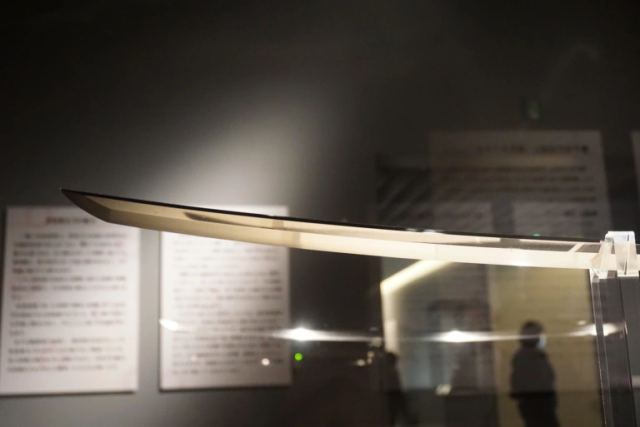

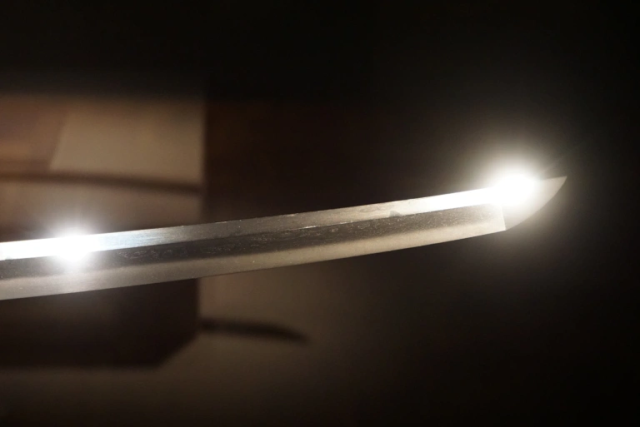

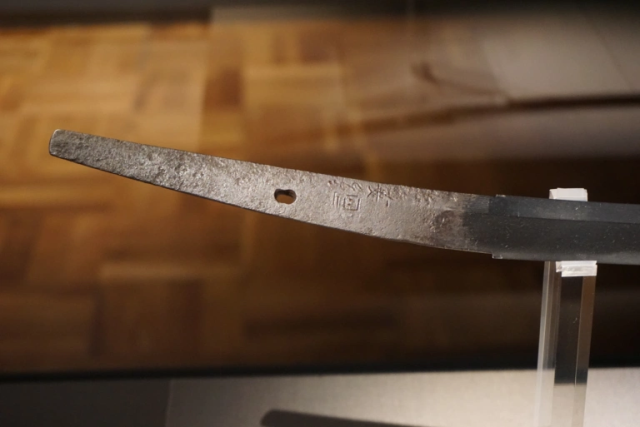
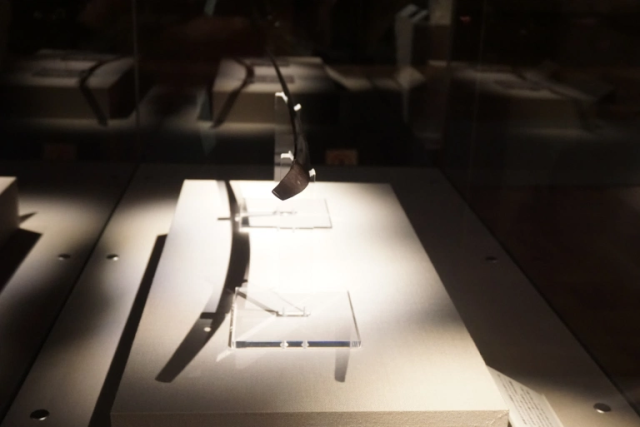
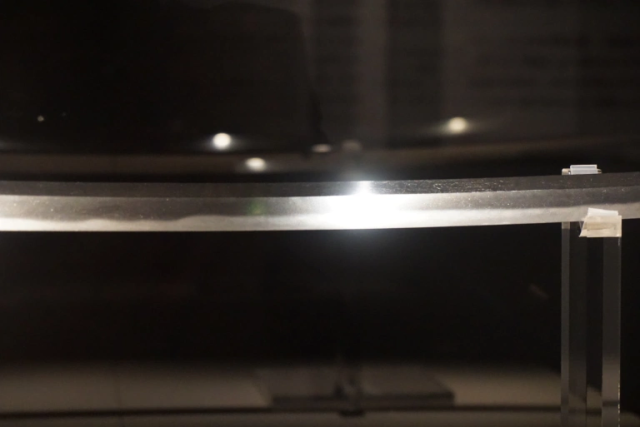

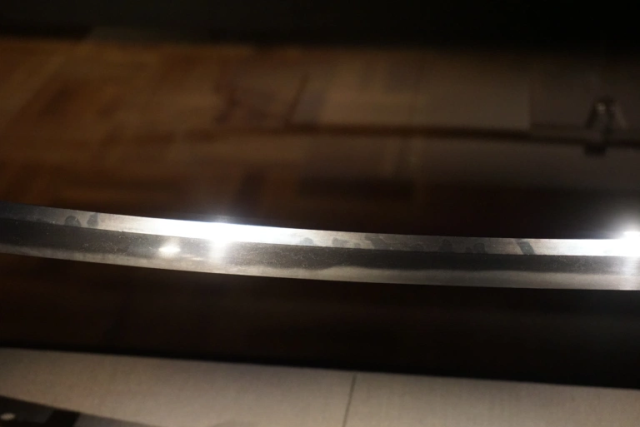
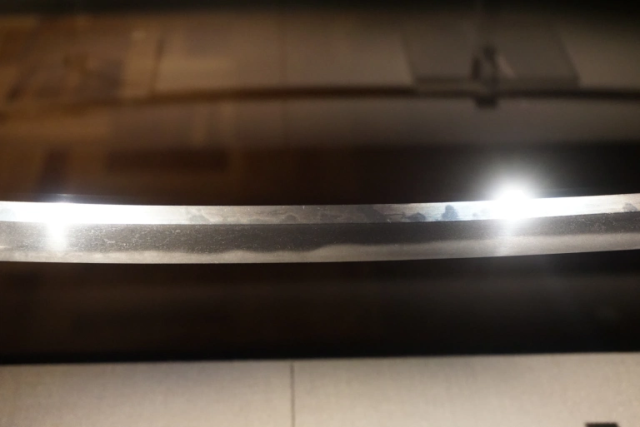
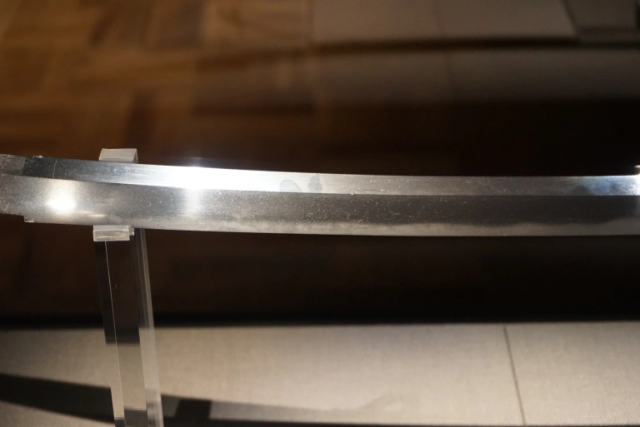
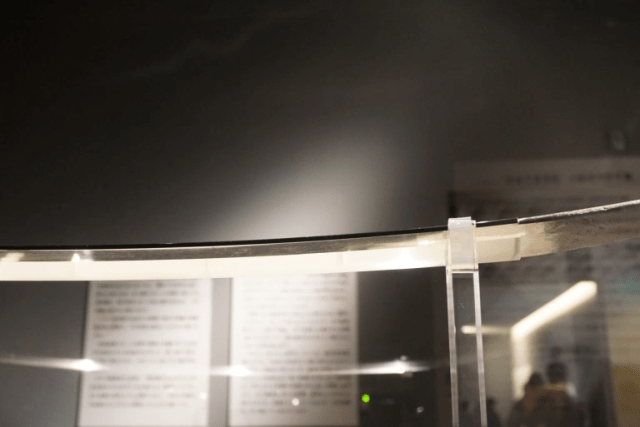
 Dojigiri, the millennium-old katana said to have slain a demon, is now on display in Tokyo【Pics】
Dojigiri, the millennium-old katana said to have slain a demon, is now on display in Tokyo【Pics】 Japan’s legendary Brother Katana might not be brothers after all? Investigating the mystery【Pics】
Japan’s legendary Brother Katana might not be brothers after all? Investigating the mystery【Pics】 Legendary crescent moon katana, one of Japan’s Five Swords Under Heaven, now on display in Tokyo
Legendary crescent moon katana, one of Japan’s Five Swords Under Heaven, now on display in Tokyo An up-close look at one of Japan’s five Ryuseito swords, forged from meteorites【Photos】
An up-close look at one of Japan’s five Ryuseito swords, forged from meteorites【Photos】 This hotel has one of the coolest katana collections in Japan, and admission is totally free【Pics】
This hotel has one of the coolest katana collections in Japan, and admission is totally free【Pics】 Disillusionment at Tsukiji’s tourist-target prices led us to a great ramen restaurant in Tokyo
Disillusionment at Tsukiji’s tourist-target prices led us to a great ramen restaurant in Tokyo Japan may add Japanese language proficiency, lifestyle classes to permanent foreign resident requirements
Japan may add Japanese language proficiency, lifestyle classes to permanent foreign resident requirements Shinjuku izakaya’s all-you-can-eat-and-drink plan is one of Tokyo’s best secret cheap eats
Shinjuku izakaya’s all-you-can-eat-and-drink plan is one of Tokyo’s best secret cheap eats How to make faux-fancy blowfish hotpot with cheap takeout sushi【SoraKitchen】
How to make faux-fancy blowfish hotpot with cheap takeout sushi【SoraKitchen】 More people in Japan quit sending New Year’s cards and many have started to regret it
More people in Japan quit sending New Year’s cards and many have started to regret it Everything you wanted to know about the Ainu, with photos and video【Rocketpedia】
Everything you wanted to know about the Ainu, with photos and video【Rocketpedia】 Japan’s new KFC-flavor potato chips don’t taste like KFC, but they do taste like chicken【Taste test】
Japan’s new KFC-flavor potato chips don’t taste like KFC, but they do taste like chicken【Taste test】 Why you shouldn’t call this food “Hiroshimayaki” if you’re talking to people from Hiroshima
Why you shouldn’t call this food “Hiroshimayaki” if you’re talking to people from Hiroshima Street Fighter Hadouken Churros to be launched and eaten in Tokyo, Okami pudding on offer too
Street Fighter Hadouken Churros to be launched and eaten in Tokyo, Okami pudding on offer too Final Fantasy XIV x Isetan collection includes moogle soap, job bracelets, and crystal candy
Final Fantasy XIV x Isetan collection includes moogle soap, job bracelets, and crystal candy 7-Eleven Japan starts new temporary luggage storage service in over 300 branches
7-Eleven Japan starts new temporary luggage storage service in over 300 branches Starbucks teams up with 166-year-old Kyoto doll maker for Year of the Horse decorations【Photos】
Starbucks teams up with 166-year-old Kyoto doll maker for Year of the Horse decorations【Photos】 Tokyo’s Tsukiji sushi neighborhood asks tour groups to stay away for the rest of the month
Tokyo’s Tsukiji sushi neighborhood asks tour groups to stay away for the rest of the month Japanese woman mistaken for bear
Japanese woman mistaken for bear Return of Totoro sequel short anime announced for Ghibli Park
Return of Totoro sequel short anime announced for Ghibli Park Starbucks Japan releases new zodiac chilled cup drink for 2026
Starbucks Japan releases new zodiac chilled cup drink for 2026 Is this the most relaxing Starbucks in Japan?
Is this the most relaxing Starbucks in Japan? Starbucks on a Shinkansen bullet train platform: 6 tips for using the automated store in Japan
Starbucks on a Shinkansen bullet train platform: 6 tips for using the automated store in Japan Japan’s human washing machines will go on sale to general public, demos to be held in Tokyo
Japan’s human washing machines will go on sale to general public, demos to be held in Tokyo Japanese train company is letting fans buy its actual ticket gates for their homes
Japanese train company is letting fans buy its actual ticket gates for their homes Is China’s don’t-go-to-Japan warning affecting tourist crowds in Tokyo’s Asakusa neighborhood?
Is China’s don’t-go-to-Japan warning affecting tourist crowds in Tokyo’s Asakusa neighborhood? Starbucks Japan unveils new Christmas goods and a rhinestone tumbler that costs 19,500 yen
Starbucks Japan unveils new Christmas goods and a rhinestone tumbler that costs 19,500 yen Tokyo considering law requiring more trash cans following litter increase in heavily touristed area
Tokyo considering law requiring more trash cans following litter increase in heavily touristed area Nintendo’s Kirby now delivering orders at Kura Sushi restaurants, but not in Japan
Nintendo’s Kirby now delivering orders at Kura Sushi restaurants, but not in Japan Tokyo event lets you travel back in time, for free, to celebrate 100 years since Showa era start
Tokyo event lets you travel back in time, for free, to celebrate 100 years since Showa era start Survey asks foreign tourists what bothered them in Japan, more than half gave same answer
Survey asks foreign tourists what bothered them in Japan, more than half gave same answer Japan’s deadliest food claims more victims, but why do people keep eating it for New Year’s?
Japan’s deadliest food claims more victims, but why do people keep eating it for New Year’s? We deeply regret going into this tunnel on our walk in the mountains of Japan
We deeply regret going into this tunnel on our walk in the mountains of Japan Studio Ghibli releases Kodama forest spirits from Princess Mononoke to light up your home
Studio Ghibli releases Kodama forest spirits from Princess Mononoke to light up your home Major Japanese hotel chain says reservations via overseas booking sites may not be valid
Major Japanese hotel chain says reservations via overseas booking sites may not be valid Put sesame oil in your coffee? Japanese maker says it’s the best way to start your day【Taste test】
Put sesame oil in your coffee? Japanese maker says it’s the best way to start your day【Taste test】 The top 10 annoying foreign tourist behaviors on trains, as chosen by Japanese people【Survey】
The top 10 annoying foreign tourist behaviors on trains, as chosen by Japanese people【Survey】 No more using real katana for tourism activities, Japan’s National Police Agency says
No more using real katana for tourism activities, Japan’s National Police Agency says Starbucks Japan reveals new sakura drinkware collection, inspired by evening cherry blossoms
Starbucks Japan reveals new sakura drinkware collection, inspired by evening cherry blossoms
Leave a Reply